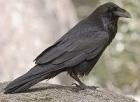This is part 5 in the Stockopedia High Yield Portfolio series by Stephen Bland (HYP). Last week I compared the various methods of holding the shares in an HYP from the taxation and other angles. Also I reviewed briefly the suitability of the strategy for more elderly investors likely to be requiring immediate income, dismissing common industry advice that equities for such people ought to be avoided or minimised. In fact immediate income investors, of any age, were the original inspiration for my public launch of the approach back in 2000.
This week I’ll have a look at whether shares that turn out to very poor investments from an HYP point of view can in some way be avoided by the initial selection checks. To make it clear, I will define first what constitutes a lousy share for HYP purposes. There are two main categories of lousiness but note that it is what has happened to the income with which I am principally concerned. Capital, remember, is very much secondary or irrelevant.
The worst is a share in the portfolio that has gone bust so that there is no possibility of any future income from it, the latter point being the very reason for holding it in this strategy. The capital will have been lost too.
The less worse is a share that has suspended dividend payments for a long period, a crime in the HYP world, but is still listed on the market thereby presenting the chance of income recovery at some stage. In such circumstances the share price will very likely have fallen dramatically from cost.
I am quite willing to admit that even with my very lengthy experience in the market spanning several decades, I have picked shares that have gone on to do very badly in HYPs that I have constructed. Which is not at all the same thing as saying those portfolios as a whole have done badly. Quite the contrary.
My worst examples were two banks that I selected at various stages years ago, before the financial crisis. These were Lloyds and Royal Bank of Scotland. Both have retained their listings and therefore still remain in the portfolios but have remained dividendless for many years now and their share prices are down 80-90% on cost. But it is the lack of any payout for such long periods which…








